An important yet overlooked part of a dog’s hygiene routine is teeth brushing. And we all know how those smelly kisses feel like! If you’d like to learn how to brush your dog’s teeth at home, you’ve come to the right place. In this article, we’re going to give you our best tips on how to brush a dog’s teeth. We’ll go through each step of the process, and also recommend you some of the best tools and products you can use at home. Let’s get started!
Why Is It Important To Brush Your Dog’s Teeth?
We can all probably say that we’ve encountered countless dogs with bad breath. It might even seem that it’s an inevitability. However, brushing your dog’s teeth is the easiest and most cost effective way to eliminate bad breath and improve your dog’s dental health.
Just like us humans, dogs need a good dental hygiene routine to keep those teeth and gums healthy. Once food gets stuck between the teeth, bacteria starts to spread. Naturally, over time this can cause dental problems like gum disease, plaque buildup, tartar, inflammation, and infections. Not to mention, you wouldn’t want your pup to swallow harmful bacteria all the time. If a dog’s dental problems are left untreated, the excess toxins will start to spread from the mouth to the bloodstream. In severe cases, this can drastically affect your dog’s health and even damage their organs.
Of course, even if you brush your dog’s teeth daily, your vet might still recommend thorough teeth cleaning once in a while. Mostly for pups who struggle with excessive plaque buildup. However, brushing your dog’s teeth is a surefire way of reducing the risk of any dental problems and diseases.
Before you jump in with your toothbrush and toothpaste, let’s take a closer look at the most important steps you need to know when learning how to brush a dog’s teeth at home.
Steps To Brush Your Dog’s Teeth At Home
1. Select The Space And Time
Before your start, provide your dog a safe and comfortable space so your pup can feel relaxed. It doesn’t matter if you’re on the couch or on a kitchen counter, as long as your dog feels safe, comfortable, and there are no distractions like other people, kids, or pets around. Pick a time when the dog is well rested and not hungry or thirsty, and try to keep it short, about 2-5 minutes. Additionally, make sure you have good lighting, so you can see exactly what you’re doing.
Another important tip is to always use positive reinforcement. Don’t raise your voice or use threatening body language or sounds. Make this an enjoyable process for both of you, and your pup will start to see it as a nice and comforting bonding experience.
2. Find The Right Brush And Tools
Of course, you’ll be needing the correct tools for brushing your dog’s teeth. Namely, a toothbrush and toothpaste specially designed for dogs. Look for pet-safe toothbrushes and toothpastes, the latter come in a variety of appetizing flavors like poultry, seafood, and beef.
You should never use human toothpaste on your dog, as these often contain xylitol, fluoride, and other substances that are toxic to dogs.
Additionally, we also recommend you opt for toothbrushes specially designed for dogs, as the bristles are much softer than on your regular human toothbrush. After we’ve covered all the steps on how to brush your dog’s teeth, we’ll give some product recommendations on what to use to brush dogs’ teeth. You can opt for either finger toothbrushes or the more traditional toothbrush with a handle.
3. Touch The Gums Without Brush
Now that you have all your tools in place, your pup is sitting still and feeling relaxed, you’re ready to start by touching their gums without a brush first. Gently rub your finger along your dog’s gum line so they can get used to the motion. This is such an important step and will make a huge difference before you introduce the toothbrush.
This step is especially important if you’ve never brushed your dog’s teeth before. First, you need to make sure your doggo gets used to you handling their mouth. Start by lifting up the top lip with one hand while you touch the teeth and gums with your other hand. Then pull the bottom lip down and do the exact same thing with the bottom teeth. Don’t be discouraged if your pup takes time to get used to it. After a few sessions, you’ll be ready to try it with a toothbrush. And keep in mind that you should not force your dog if they are not feeling it. If your pup fights back, stop what you’re doing and reassure them.
4. Introduce The Toothbrush
Once your dog feels comfortable with you touching their teeth and gums, you can start introducing the toothbrush. First, grab the toothbrush and let your dog smell and inspect it. When they’re all done with the inspection, you can start touching the teeth with the toothbrush. Touch the front, side, and back teeth on both top and bottom, while giving your pup plenty of praise and positive reinforcement.
5. Add Toothpaste & Do A Taste Test Beforehand
You’re almost ready to start brushing your dog’s teeth. But first, do a quick taste test. Just like you introduced the toothbrush, to the same thing with the toothpaste. First show your dog the toothpaste, let them smell it, inspect it, and lick it from your finger. This step will help your dog get used to the taste and texture of the toothpaste. Once your dog has finished inspecting and tasting the toothpaste, you can add it onto the toothbrush.
If your pup does not get accustomed to the toothpaste after a few days, try a different flavor. They might not enjoy chicken, but might absolutely adore salmon flavored toothpaste. The key is to find a flavor that your dog enjoys the most.
6. Start Brushing Top Teeth
You have introduced the toothbrush, your dog enjoys the flavor of the toothpaste. So, how to brush a dog’s teeth? Let’s now get into the technique.
Start by brushing the top teeth while you hold up the upper lip. First brush the front of the teeth, then focus on each side, and then move onto the back teeth. You can use one hand for brushing and the other for holding up the lip. Throughout this process, don’t forget to praise your dog. Always be gentle and stay calm and positive.
7. Use A Circular Motion
When brushing your dog’s teeth, use a circular motion. Similarly how you would brush your own teeth. Your brush should come in at around a 45-degree angle so you can reach both teeth and the gum line. Keep in mind that food bits and bacteria can also accumulate around the gums. Try to reach every nook and cranny to avoid any inflammation and infections from bad bacteria.
Additionally, be sure you’re not putting too much pressure on the toothbrush. A small amount of bleeding around the gums can happen sometimes, but you would not want to use too much force and overdo it. If you notice that your dog’s gums excessively bleed every time you brush their teeth, please consult with your vet about the possible solutions.
8. Start Brushing Bottom Teeth
After you’ve finished brushing the top teeth from all sides, move on to brushing the bottom teeth. Just like you lifted the upper lip to reach the top teeth and gums, you’ll be now holding down the bottom lip to reach the bottom teeth and gum line.
Brushing the bottom teeth can be a bit more challenging than the top teeth. Again, you can start from the front, then sides, and finally move onto the back teeth. However, if your pup is still getting used to the brushing sessions, you might want to start from the back teeth, as there’s usually most plaque and tartar buildup. This way you can target more critical areas, and work your way up to the whole mouth over time.
Moreover, you’ll probably find that brushing the insides of bottom teeth can be rather challenging. If brushing your dog’s teeth at home is a new thing, you can add this step later on into the routine once your pup has gotten used to teeth brushing.
9. Focus On Plaque
The main goal of brushing your dog’s teeth is to remove plaque and get rid of any food that might be stuck. In order to effectively remove plaque, you need to give each tooth some special attention. Using small, circular motions, focus on a few teeth at a time. Apply enough pressure to actually scrub off the plaque, and make sure you spend enough time on each area. You should also reach the gum line with the bristles, as that’s where food and bacteria gets stuck as well.
Of course, there’s a fine line between enough and excessive pressure, so be sure to not hurt your dog in the process. If you notice any heavy bleeding, it might be either because of too much pressure or a symptom of gum disease.
10. Reinforce Them With Rewards
Don’t underestimate what positive reinforcement and praise can do! Understandably, learning how to brush your dog’s teeth can be stressful for both of you at first. And getting into a new routine will take some time for many dogs. That’s why it’s especially important that you stay calm, positive, and keep praising your pup throughout the session. If your dog fights back, let them calm down and start again the next day.
As we already mentioned before, make this a positive and enjoyable bonding experience for you and your dog. Stroke their head and talk to them in a calm voice to reassure them. You can place your arm around your dog to comfort them and keep them still. Have a few treats at hand that you can give your dog after each step. Rewarding your pup with treats is a great way to teach them.
And finally, when you’ve finished brushing your dog’s teeth, end it on a positive note with some nice treats and playtime. Even if your dog doesn’t particularly enjoy tooth brushing, they will learn to associate it with something fun to look forward to afterwards.
What To Use To Brush Dogs Teeth: Top Tools For Dental Hygiene
Vetoquinol Enzadent Dual-Ended Toothbrush for Dogs
This dual-ended toothbrush is specially designed for dogs and cats of all sizes. You can easily switch between two ends to see which one works best on your dog’s teeth. Both ends come with soft bristles that are gentle enough on your pup’s gums, but can effectively remove food debris and plaque.
Vetoquinol Enzadent Enzymatic Poultry-Flavored Toothbrush Kit
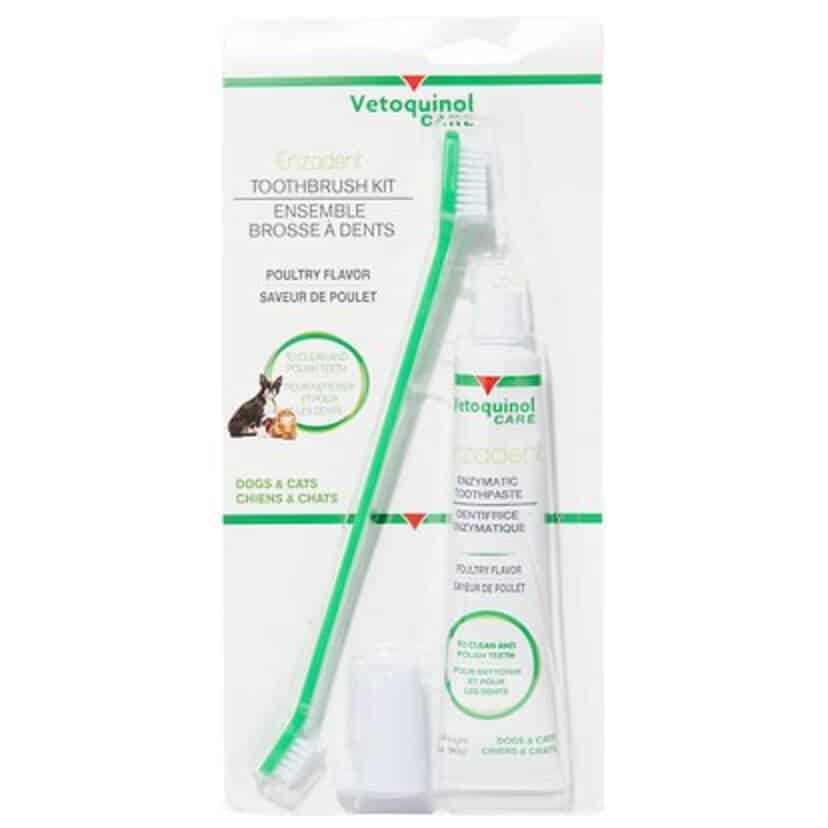
What’s especially great about this toothbrush is that it comes with an angled head. This makes it so much easier to maneuver around your dog’s teeth and gums, and get to all of those hard-to-reach areas inside the mouth.
Nylabone Advanced Oral Care Dog Finger Brush
In addition to a more traditional-looking toothbrush, we love a good finger brush. Not all dogs are okay with regular dog toothbrushes at first (or at all!) and this is the perfect solution for that problem. This finger brush is less intimidating and will help ease your dog into teeth brushing. You’ll just have to place it on your index or middle finger and you’ll be ready to go. It comes with soft rubber bristles that gently target plaque and tartar buildup. Although some people find that the finger brush is very small, you can place it in warm water to expand before using.
Nylabone Advanced Oral Care Dog Finger Brush
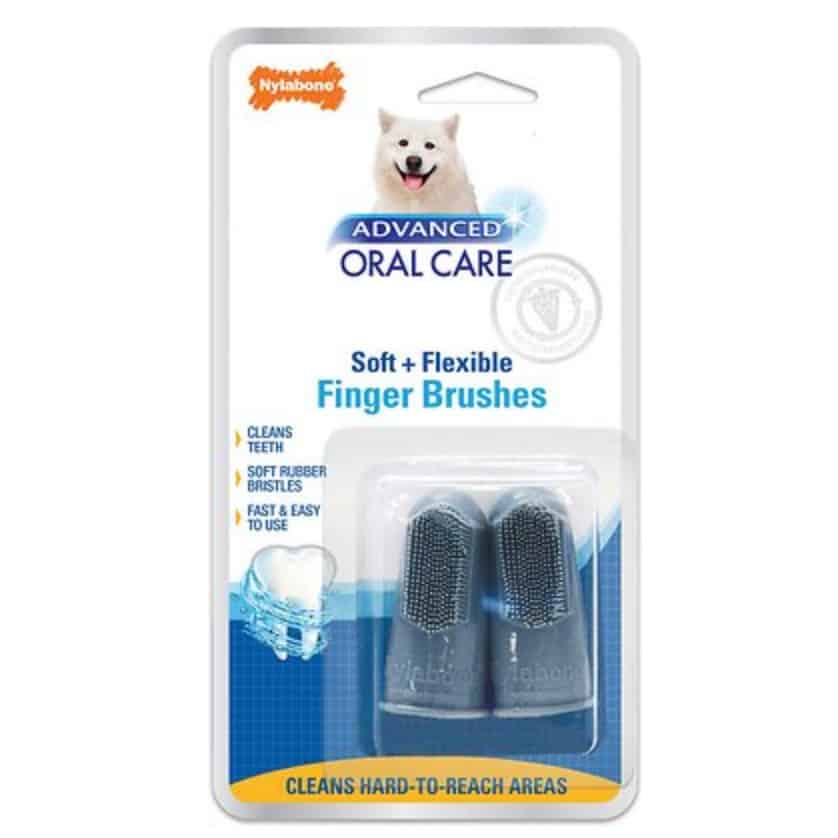
Virbac C.E.T. Enzymatic Poultry Flavored Toothpaste
Lastly, you’ll be needing a toothpaste that’s specially formulated for dogs. We absolutely love this enzymatic toothpaste that actually helps prevent the formation of plaque. It contains a Dual Enzyme system that’s more abrasive than many other toothpastes. Meaning, you’ll have an easier time targeting plaque and tartar.
Virbac C.E.T. Enzymatic Dog Poultry Flavor Toothpaste
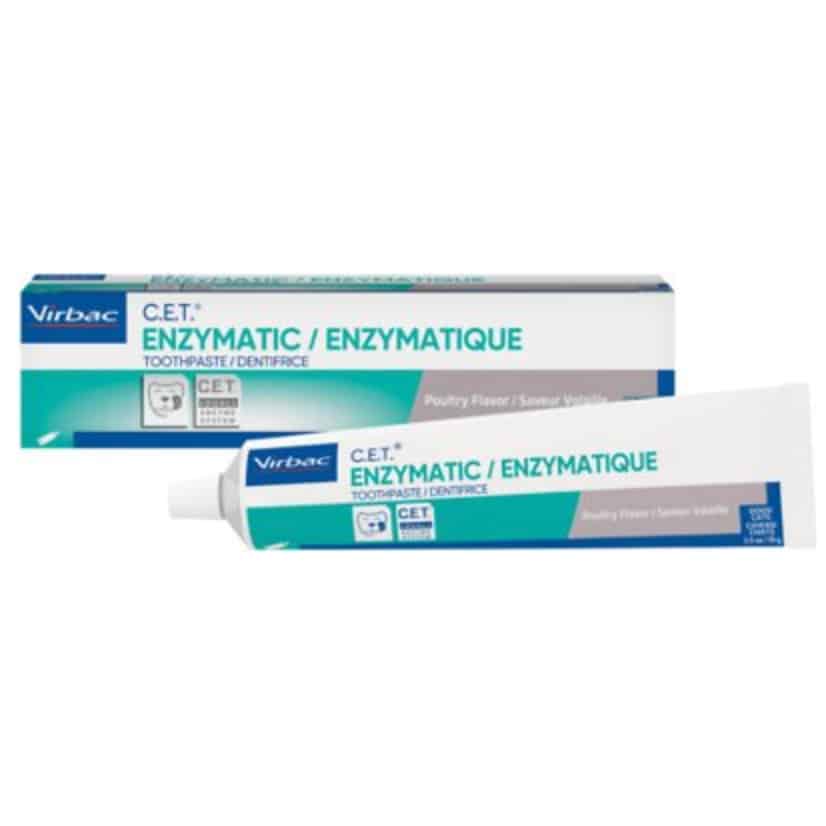
In addition to poultry, it comes in a variety of flavors like beef, vanilla-mint, seafood, and malt. There are plenty of options for your dog to choose from! It’s completely safe to use on both dogs and cats, and it doesn’t contain any harmful foaming agents.
How To Brush Your Dog’s Teeth FAQ
Do You Brush The Inside Of Your Dog’s Teeth?
You should brush all surfaces of your dog’s teeth to target plaque buildup and improve their oral health. If on the first few times your pup is having a hard time with the brushing, you can only focus on the outsides of the teeth. Their coarse tongue helps get rid of some of the food pieces from the insides of the teeth. However, aim to brush all of your dog’s teeth both inside and outside. It can take some time getting used to, but with a little bit of patience, you’ll get there.
Does Brushing A Dog’s Teeth Really Help?
Yes, brushing your dog’s teeth really does help! It’s the easiest way to keep your dog’s teeth and gums healthy and smell-free. Just like brushing our teeth helps get rid of food and bacteria stuck between the teeth, the same goes for dogs. If the teeth aren’t cleaned, the food stuck will start spreading bacteria, which will then cause plaque and tartar buildup, inflammation, infections, and gum disease. Furthermore, the excess bad bacteria can cause a whole range of other health issues to your dog. Brushing your dog’s teeth at home will also greatly reduce the risk of having to undergo a thorough teeth cleaning under anesthesia.
What Can I Use To Brush My Dog’s Teeth?
When brushing your dog’s teeth at home, always use a toothpaste and toothbrush specially designed for dogs. Human toothpastes contain ingredients like xylitol and fluoride that are toxic to dogs. Additionally, pet-safe toothpastes come in a variety of flavors to make the whole process more enjoyable for dogs.
Be sure to check out the products we recommended above. We find these to be one of the best for brushing a dog’s teeth.
How Often Should You Brush A Dog’s Teeth?
Just like you would brush your own teeth every single day, you should aim for brushing your pup’s teeth daily. Of course, it might not be attainable nor sustainable for all, so try to do it at least once or twice weekly. This is the simplest way you can minimize the risk of any dental diseases and discomfort your pup might experience.
To conclude, brushing your dog’s teeth might seem like an impossible task at first, but the benefits outweigh that small discomfort you’ll experience for just a few minutes a day. Staying on top of your dog’s dental hygiene routine is the best thing you can do to support their oral and overall health. It will save you both time and money in the long run. The most important thing when learning how to brush your dog’s teeth is to start slow and stay consistent. It might be more difficult to get your dog accustomed to teeth brushing once they’re adults. However, after a few sessions, you’ll see how your pup won’t mind it anymore. We hope you learned some useful tips and tricks in this article, and can now make sure your lil pal’s mouth is in top condition at all times.
Do you brush your dog’s teeth at home yourself? Let us know in the comments below!
Learn How to Care for Your Doodle Puppy!
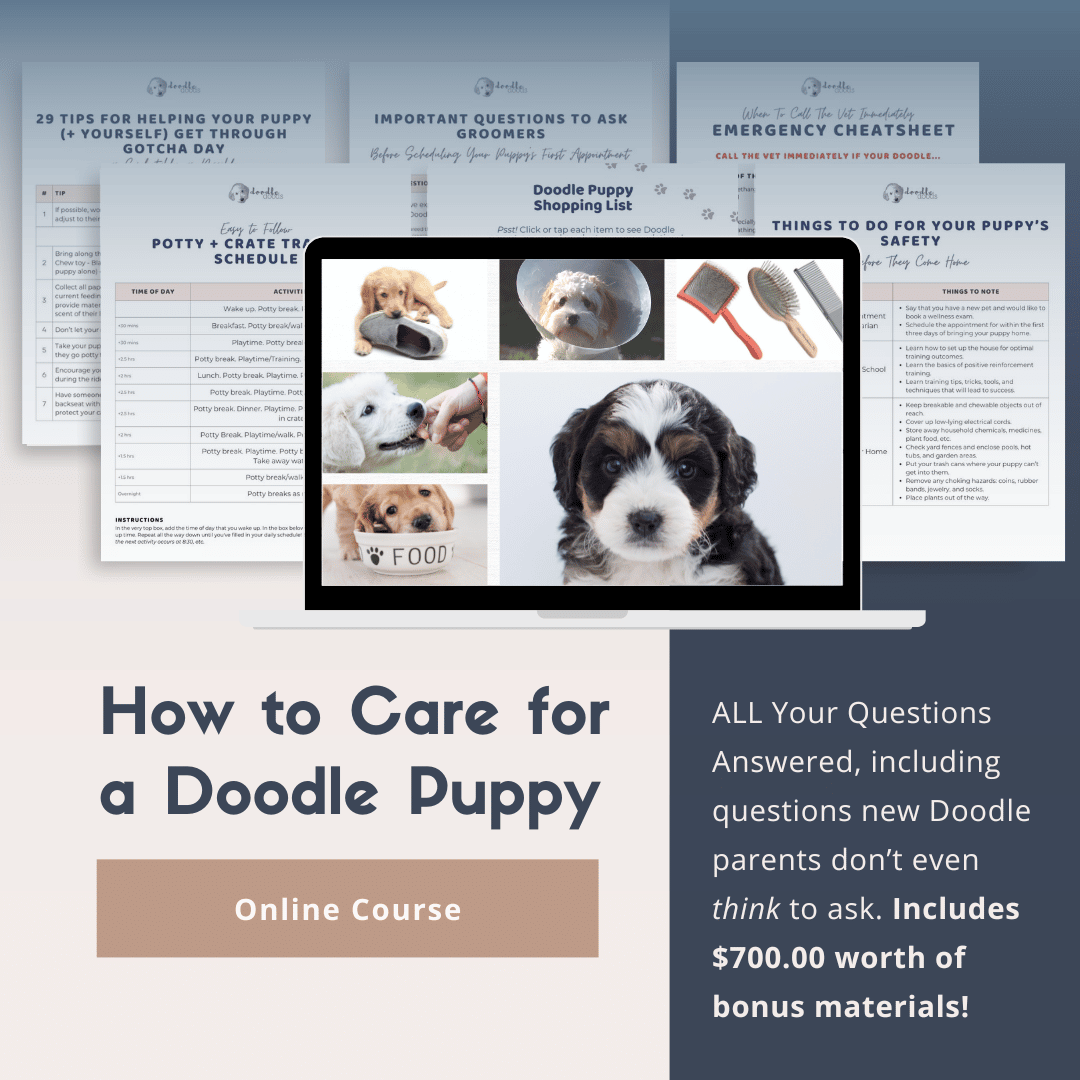
Perfect for first-time Doodle parents, get ALL your questions answered, including questions new Doodle parents don’t even think to ask.
Plus, get $700 worth of Bonus Materials for FREE, including:- Doodle Parenthood Community and Support Group ($190 value)
- Doodle Puppy Growth Tracker ($20 value)
- EMERGENCY Cheatsheet: When To Call The Vet Immediately ($50 value)
- HELP! Button ($145 value)
- And SO MUCH MORE!
The information on this page is for informational purposes only. It is not intended to be a substitute for qualified professional veterinary advice, diagnosis, or treatment. Always seek the advice of your veterinarian or other qualified animal health provider with any questions you may have.

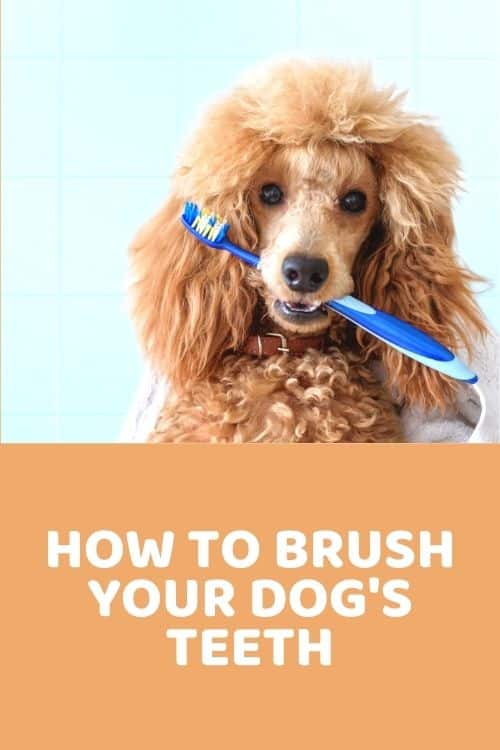
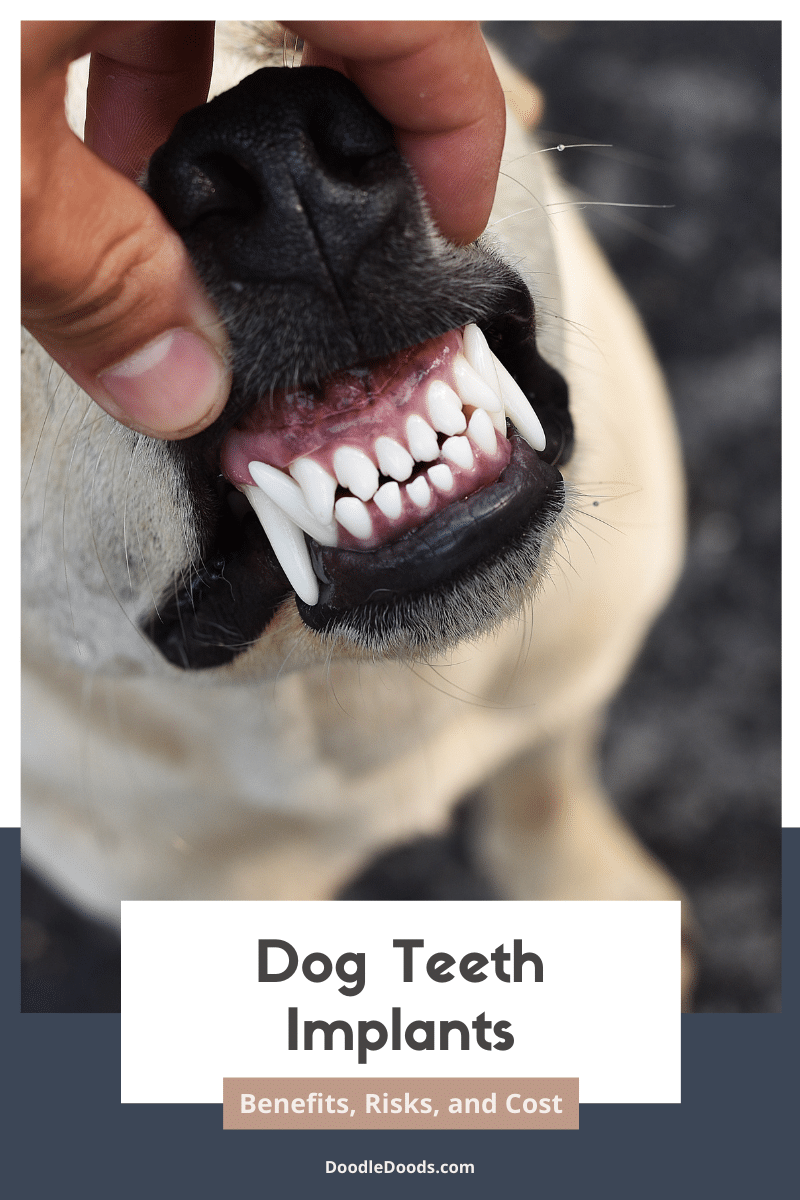
Yes I brush my golden doodles teeth at home. She is fussy about toothpastes so I make up my own…
August 25, 2021 at 8:19 pmCoconut oil, baking soda, dried parsley, peppermint oil..a few drops,…and sometimes I add a bit of chicken boullion to give a chicken flavor! She seems to love it! Wants to lick the toothbrush when I’m done!I haven’t been doing the insides of her teeth, so thanks for that helpful information! If you feel my homemade toothpaste isn’t a good idea I’d like to hear your thoughts on it!! Thank you!!